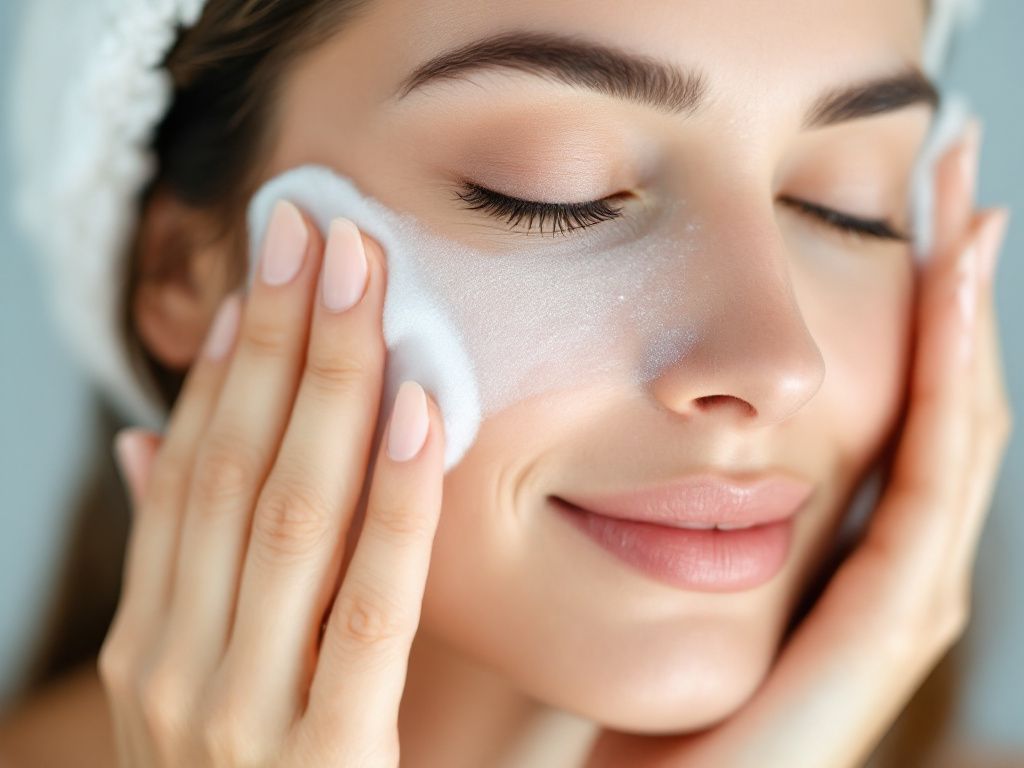Here’s a question: Have you ever looked in the mirror after a solid crying session and wondered what went down with your face? You know the feeling—it’s a mix of puffy, flushed, and positively salt-riddled chaos staring back at you, begging for some TLC. Crying can be cathartic, a genuine emotional release that can leave you feeling strangely lighter. But, let’s be honest—those post-crying puffy eyes, blotchy cheeks, and delicate skin need some love, too. We’re diving into “post-crying skin recovery,” your cheat sheet to self-care whenever life leaves your spirits heavy and skin showing the signs.
Understanding Skin Changes Post-Crying
So, here’s the lowdown: when you cry, there’s a rush of blood to the face, quite literally. This can result in visible redness and puffiness you shouldn’t ignore. Tears carry a salt content that might dry your skin out, too. If you’re someone with sensitive skin, this might exacerbate pre-existing skin conditions, making redness treatment an everyday need.
Now, the good thing—skin recovery is all about gentleness and revitalizing your skin back to its pre-crying session glory.
Gathering Your Skin Recovery Essentials
To start this little post-crying project, you’ll need a few handy essentials. We’re not talking anything complex here. I’m suggesting items you can snag from your bathroom cabinet or kitchen:
- Gentle Cleanser: Trust me, go for something mild. Avoid stuff that foams too much. Harsh cleansers will just irritate your already delicate skin.
- Cool Compress: Simply take a clean cloth and soak it in cold water or pop it in the fridge for a bit. Thank me later.
- Soothing Moisturizer: Look for products with ingredients like aloe vera or chamomile—they’re calming giants in the skincare world.
- Eye Cream (Optional but Heavenly): If you’ve got it, use it! Something with caffeine is perfect for deflating those puffy, peeper-hiding lids.
- Simple Hydrating Mist: Let’s not forget about the wonders a little mist can do for hydration and refreshment.
Steps to Soothe Those Post-Cry Blues

1. Start with a Gentle Cleanse
A clean slate is key, folks. Gently clean your face using your chosen mild cleanser. Focus on removing tear residues and the salt they come along with that tend to dry the skin out. Pat, don’t rub to avoid stressing your skin further. Picture it as a mini, nurturing ritual for yourself, letting the worries of the day rinse away.
2. Apply a Cool Compress
Switch to chill mode. Using your cold compress, apply it softly to your skin. Especially target puffy areas around your eyes and bring some relief to those swollen tissues. Cooling effect helps reduce redness and puffiness. Feel free to daydream as you cool it out—it can be quite relaxing.
3. Hydrate and Moisturize
Now, listen up: hydrating properly is crucial! After cleansing and calming your skin with a cool compress, go ahead and apply your soothing moisturizer. The aim is nurturing your skin barrier. Go for the eyes with that caffeine eye cream I mentioned, if available. The skin around our eyes is fragile—give it a bit of targeted love.
4. Incorporate a Hydrating Mist Throughout Your Day

Alright, keep in mind—hydration is not a one-time gig. A hydrating mist is like a mini spa moment you can gift yourself throughout the day. Seriously, stash it in your bag; it’s your secret weapon for a fresh look as you navigate the day post-cry. Spritz-spritz and shine on.
A Moment for Redness Treatment
Redness can really stick around sometimes. Here’s a little extra focus if that’s your particular skin quirk post-sob bringing some unwanted color to your skin. Think anti-inflammatory products that have white tea or licorice extract, perhaps, to minimize and soothe redness. Gentle exfoliation is often skipped but consider doing it once your skin feels up for this—that salt can clog things up, too.
Strategies for Emotional Care and Reflection Post-Crying
I get it, crying saps your energy, and emotions might still feel raw afterwards. Consider these gentle reminders for your emotional care alongside your skin recovery.
Practicing Mindful Breathing
When you breathe properly, oxygen flows, not just soothing the mind but also helping the skin as you’re promoting blood circulation. Inhale deeply; exhale slowly—it’s a rhythm to think about as you pat products into your face.
Journaling Your Feelings
Spill your thoughts onto pages, creating a trail exploring what really stirs your spirit deep down. It’s a way of letting emotions travel outside yourself. Plus, focusing on the positives while jotting down grateful moments proves immensely healing.
Treat Yourself Kindly

Be your own cheerleader. Those moments where self-doubt creeps up, counteract it. Imagine talking to a friend instead of yourself. What would you tell them if they were upset? We often extend more kindness to others; just give some of that back to you.
Move Your Body, Ease Your Mind
Think about it: whether a short yoga routine or a brisk walk, moving has its way of untangling mental knots. It’s one way of processing emotions—an action tapping into the positivity of endorphins. Ever feel a post-walk clarity? That’s movement for you.
Common Mistakes To Dodge in Skin Recovery
Before wrapping things up, a quick rundown on what to steer clear from:
- Skip Heavy Makeup: Allow your face to breathe after all it’s been through. Makeup can be a pore-constricting, redness-enhancing beast if applied too quickly. Let your skin work through its own healing process.
- Avoid Alcohol-based Products: Sure, they sound like a quick drying fix. But hold up—they’ll dry skin further. Think nourishing, not stripping.
- Don’t Overtreat the Skin: Balance is golden. Resist the urge to apply every serums known to skincare obsessives. Sometimes, less is more in terms of allergen exposure risk when a single new product introduced can derail recovery.
Keep moments of crying in perspective, recognizing tears as a healthy emotional outlet despite the rivalry they present your complexion. Being comfortable in actively participating in your own skin recovery and managing emotional flow can help break cycles of stress-your mental and skin’s best friend.
The truth is, crying isn’t a signal of weakness or failure—it’s human. It showcases our depth and ability to feel—kind of beautiful when you look at it that way, right? Wear your resilience with pride, pinpointing these moments of vulnerability as avenues to not only understand yourself better but also treating your skin like the cherished armor it truly is. Go ahead, wrap yourself kindly in care, marking each tear-induced blemish as a badge of growth—and who wouldn’t want skin recovery to play wingman on that party?
In the grander scheme of self-discovery, every little step leads us on this therapeutic journey, encompassing tending to our outer canvas and what’s interlaced beneath it. Consider this path not simply one of healing patchwork, but nurturing the fiber of life overflowing within and beyond surface blemishes. You’re strong, skin and spirit alike.
Frequently Asked Questions
What are the main stages of skin recovery and wound healing?
The process of skin recovery and wound healing involves four main stages. The first stage is hemostasis, where the body stops the bleeding by forming a clot. The second stage is the inflammatory phase, where the body cleans and defends the wound. The third stage is the proliferative phase, where new tissue is built, and the fourth stage is the remodeling phase, where the new tissue is strengthened and organized[1][3][5>.
How long does it take for a wound to fully heal?
The time it takes for a wound to fully heal can vary depending on the size and depth of the wound. Generally, most wounds are repaired within about 3 months, but the skin may take up to a few years to regain its full strength. Larger or deeper wounds may take longer to heal[1][3).
What role do white blood cells play in the skin recovery process?
White blood cells, particularly macrophages, play a crucial role in the skin recovery process by cleaning the wound, fighting infections, and sending out chemical signals (growth factors) that help in repairing the damaged area. They engage in phagocytosis, eating debris and killing bacteria to reduce the risk of infection[1][3][5).
How can I help my body recover from a wound more effectively?
To help your body recover from a wound more effectively, keep the wound clean and covered. Ensure good blood flow to the area by maintaining a healthy diet rich in nutrients and oxygen. Avoid smoking and manage stress, as these factors can impede the healing process. Additionally, follow any specific advice given by your healthcare provider[1][3).
References










